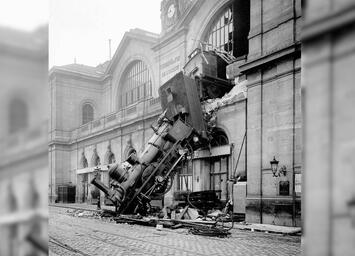
On September 20th Sound Transit published the Final Environmental Impact Statement (FEIS) for the proposed light rail extension to West Seattle. Ordinarily, publishing the FEIS is one of the final steps in the decision-making process with subsequent Board approval only a formality. However, in this instance information revealed in the FEIS is so unfavorable the Board may realize it is time to reconsider whether it makes sense to proceed as planned.
The news that got the Board’s attention was a cost increase from the 2023 estimate of $4 billion to somewhere between $5.1 and $5.6 billion. The bad news didn’t end there. Sound Transit staff then offered an even higher “opinion of probable cost” of between $6.7 and $7.1 billion, which is “based on a different cost estimating methodology and considers potential savings due to value engineering and other agency changes.” This ought to raise the question of what a realistic “probable cost” would be without the “potential savings.”
The new estimate is about triple the cost estimate provided in 2016 when the ST3 plan was approved, which, at $2.3 billion, was hardly a bargain. The revised cost is over $1.5 billion per mile for a line that is only four miles long and adds just four stations. On a per-mile basis that would make it one of the costliest light rail lines in the world, but nowhere near the most productive.
The Sound Transit Board seemed surprised at the cost increase, but they had every reason to expect the West Seattle extension would be difficult and expensive. The proposed alignment runs through built-up areas, most of the line needs to be elevated or in tunnels, a tall bridge over the Duwamish River will be needed, and considerable right-of-way will need to be purchased from businesses and homeowners. Even if Sound Transit didn’t have a twenty-year history of large cost over-runs on rail projects, the West Seattle extension had obvious challenges and risks likely to drive up the cost.
In the past Sound Transit has been resourceful in handling cost overruns. A combination of strategies including pushing out completion dates, increasing debt, and securing additional federal funding has allowed projects to go forward, even if much more slowly than originally promised. Now, however, Sound Transit is approaching its debt limit. The agency’s financial plan already assumes issuance of $24.7 billion in bonds through 2046, plus another $4.2 billion in federal loans to be repaid. By 2038 Sound Transit expects to pay over a billion dollars per year in debt service. Therefore, piling on more debt would be problematic, and in any case wouldn’t improve performance of the project, only make the ultimate cost even higher.
Faced with this difficult situation, a financially prudent governing board would ask whether it makes sense to proceed with a project that has tripled in cost and busts the budget, but the Sound Transit Board has taken a different approach. In board motion M2024-59 Sound Transit directs staff to “…develop a workplan on the programmatic, financial, and project level measures and opportunities the agency will pursue to improve the agency’s financial situation and move WSLE through design to inform a financially sound project to be baselined…”. What the motion does not do is develop alternatives or ask whether the project still makes sense. And, in case you were wondering, “baselined” is a sort of euphemism for moving the goal posts.
The Board’s motion shows that Sound Transit is approaching the problem as though it is just about the agency budget, but that narrow view ignores the bigger question raised by the FEIS, which is that despite the extravagant cost the project accomplishes very little. The fine print of the FEIS reveals total transit ridership in the region under the No-Build alternative would produce 99.7% of the ridership of the light rail alternative. In other words, the light rail extension would produce less than a one percent increase in total transit ridership for an investment of over $6 billion. That is an exceedingly poor return on such a massive investment. You might be hoping that even if the project doesn’t do much to increase ridership it might reduce congestion or greenhouse gas emissions. Alas, the FEIS also informs us that vehicle hours of delay would change by less than one half of one percent, and total vehicle miles travelled changes even less, just two tenths of one percent. As result, the West Seattle extension will not reduce greenhouse gas emissions, improve transportation system efficiency, or meaningfully improve the mobility of West Seattle residents.
Read the rest of this piece at Washington Policy.
Charles Prestrud is director of the Coles Transportation Center. Charles brings more than thirty years of transportation experience to the position, including serving as WSDOT’s planning manager for King and Snohomish Counties, and earlier in his career, as planning manager for a transit agency. He has served on several Transportation Research Board committees as well as National Cooperative Highway Research Program study panels. Charles graduated from the U.W. where his studies focused on economics and geography.
Photo: courtesy Washington Policy












